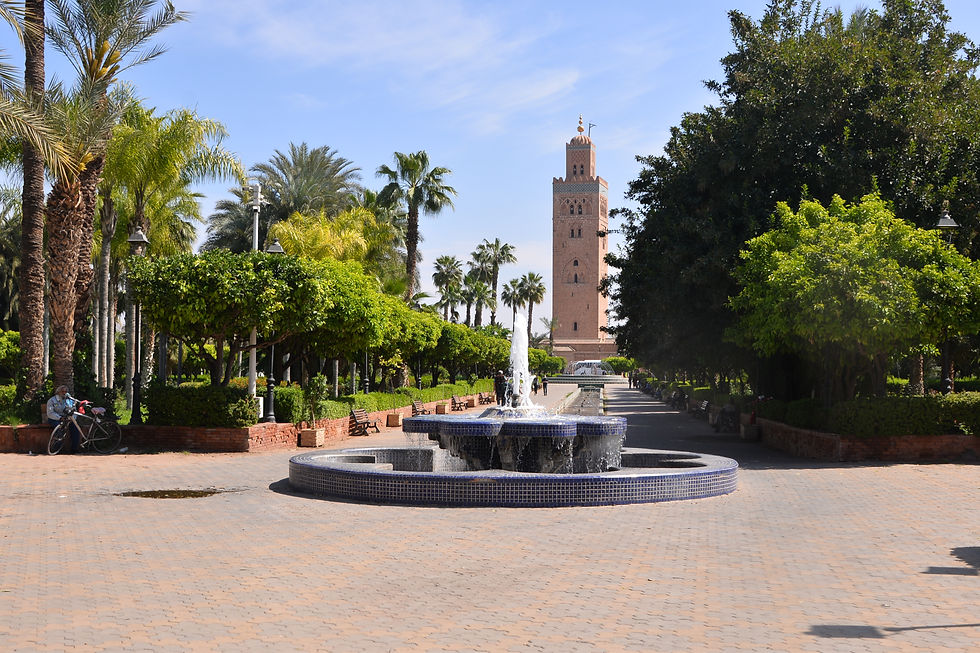
We spend 3 days in Marrakech having arrived by a direct flight to its beautiful modern airport, Menara.
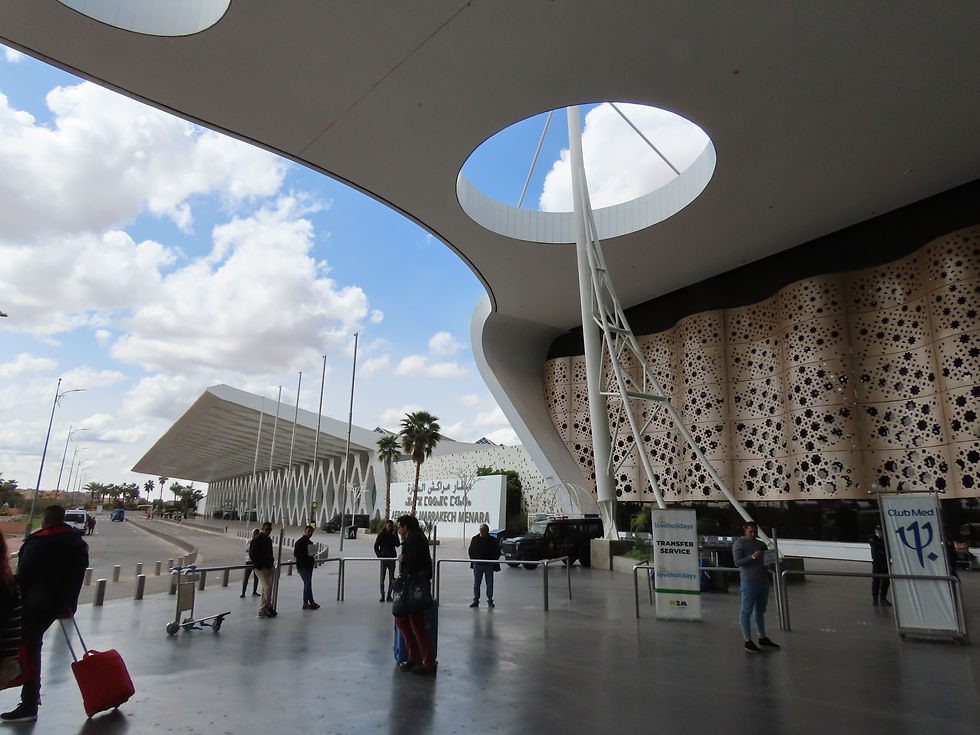
The name Marrakech is from the Berber language, the Amazigh (ⴰⵎⵓⵔⴰⴽⵓⵛ = amurakuš) meaning “Land of God”; another name is The Red City or the Ochre City from the reddish color of the wall around the old city, the Medina. According to the tour guide book, Moroccans call the city “Kech”.
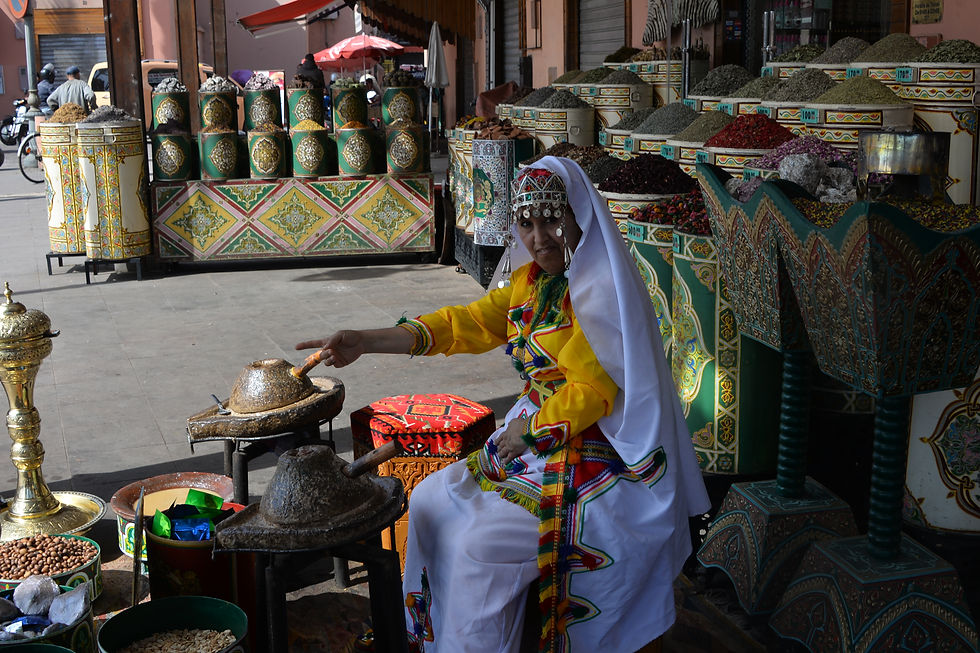
Today Marrakech is the fourth biggest city in Morocco with about 1 million inhabitants. It is a well-known tourist destination, so much so that people refuse to be photographed unless paid (over-tourism).

History of Marrakech:
Marrakech has been the capital during two dynasties that ruled Morocco; first when Marrakech was established 1062 by the Youssef ben Tachfin of the Berber Almoravid Dynasty. When the Almohad dynasty took over 1130, they left Marrakech behind. The second time it became capital was in 1525 -1669 under the Sa’adian dynasty and Ahmed al Mansour, he built many of the buildings we see today.

The current royal family, the Alaouites, came to power in 1669 and moved the capital to Meknes. Ever since Marrakech was established it has been an important gateway to the Salt Route crossing the Sahara, with caravans and traders travelling in both directions; thus, it also became a cultural and religious center.
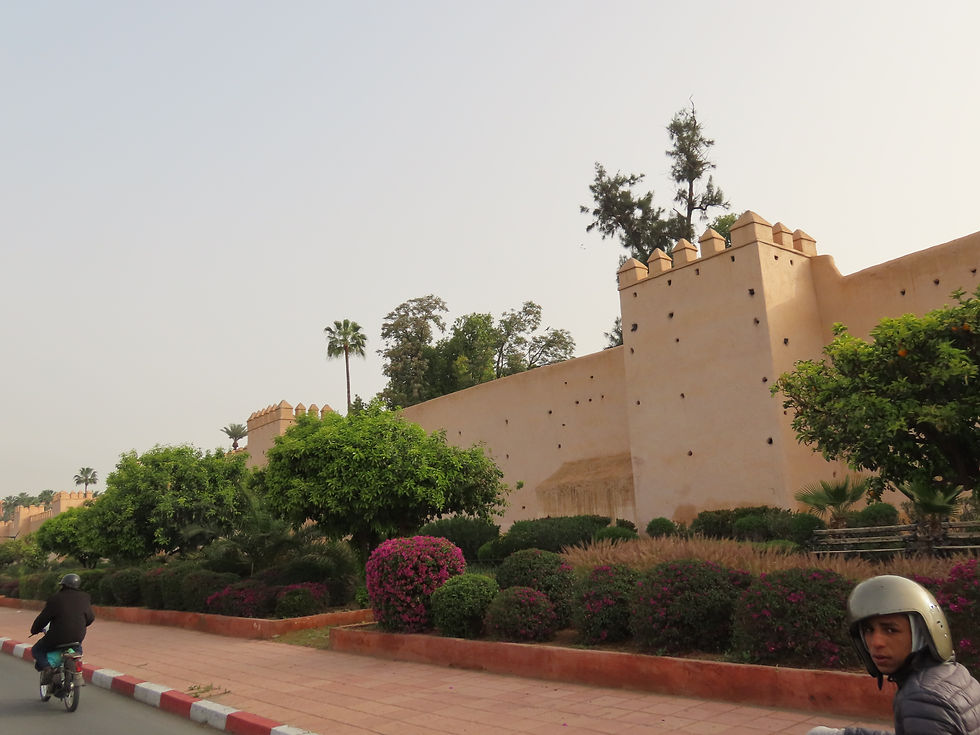
The Wall around the Medina:
Like many medieval cities, the old city, the Medina of Marrakech is surrounded by a wall, which is 19 km long, at a height of 6-8 meters and 1/5-2 meters wide and every 25-30 meters there is a watch tower. It is built of mud, straw and lime= pise, that is pressured and become very hard when dry; its red color has given the other name to the city “the Ochre city”.

This gate is called the Bride's gate - Bab el- 'Arissa
There are 12 gates today, although in the past there were more.
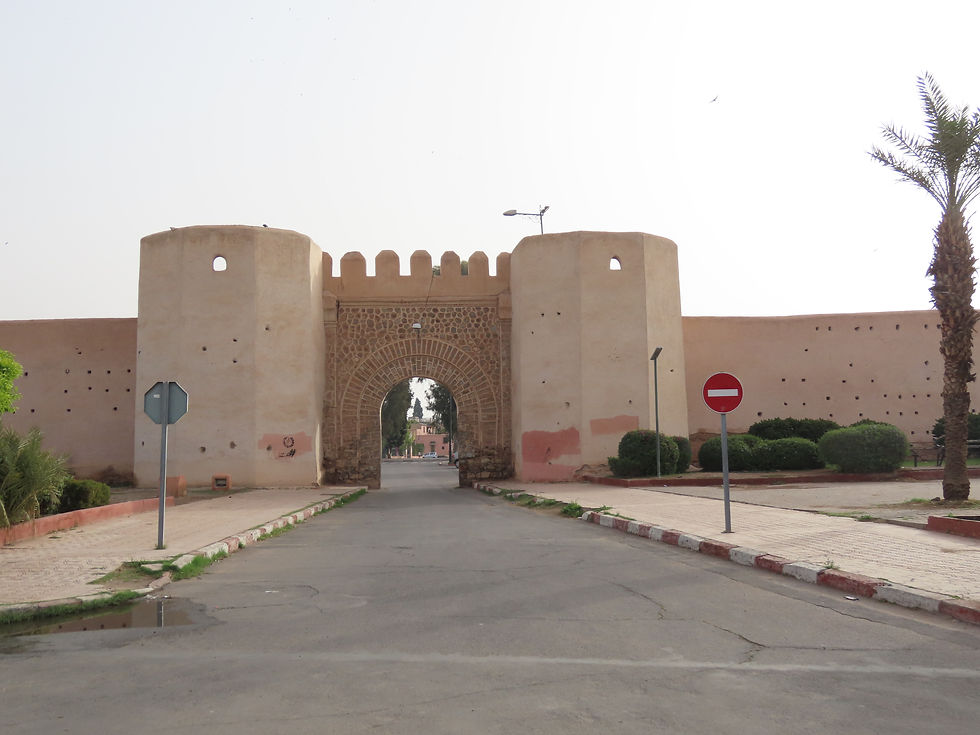
Bab el-Makhzen
The holes you see in the walls, are they from cannon balls? Or from the crumbling of the building material and enlarged by birds nesting? Another story is that the holes are caused by the scaffolds used to repair the wall, as this building technic needs a lot of repairs and maintenance. Yet another story is that the holes allow for refreshing breezes to blow into the crowded city. So, you can probably choose the explanation you like best, they are all mentioned on various websites!

The Jemaa-el-Fnaa Square:
The central square Jemaa el-Fnaa is under the minaret of the Koutoubia Mosque (The Booksellers Mosque) and at the entrance to the Medina, the old city of Marrakech.
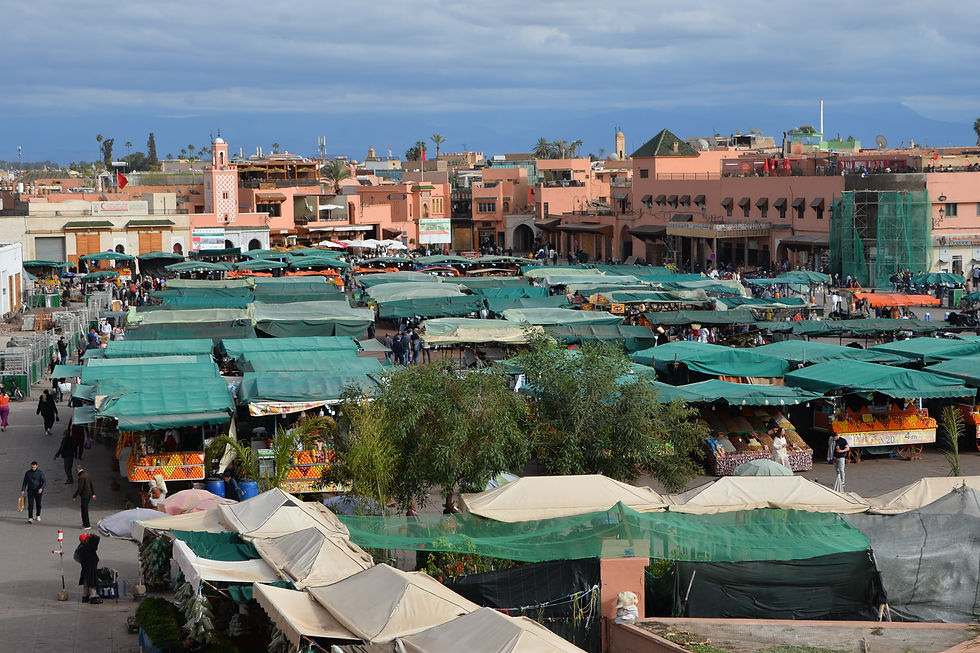
Jemaa-el -Fnaa was listed as a UNESCO heritage site in 2001, while the Medina was listed already in 1984 for outstanding universal value of architecture and art, serving as a model for other urban developments, as an example of a living ancient city.

colorful, noisy, alive
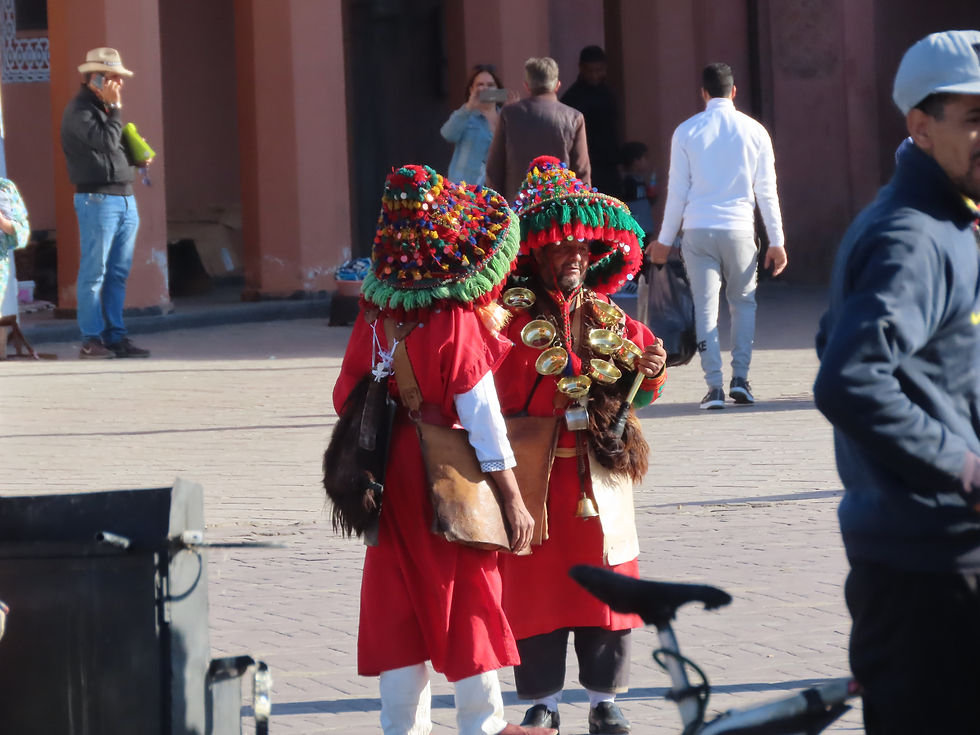
The watermen,

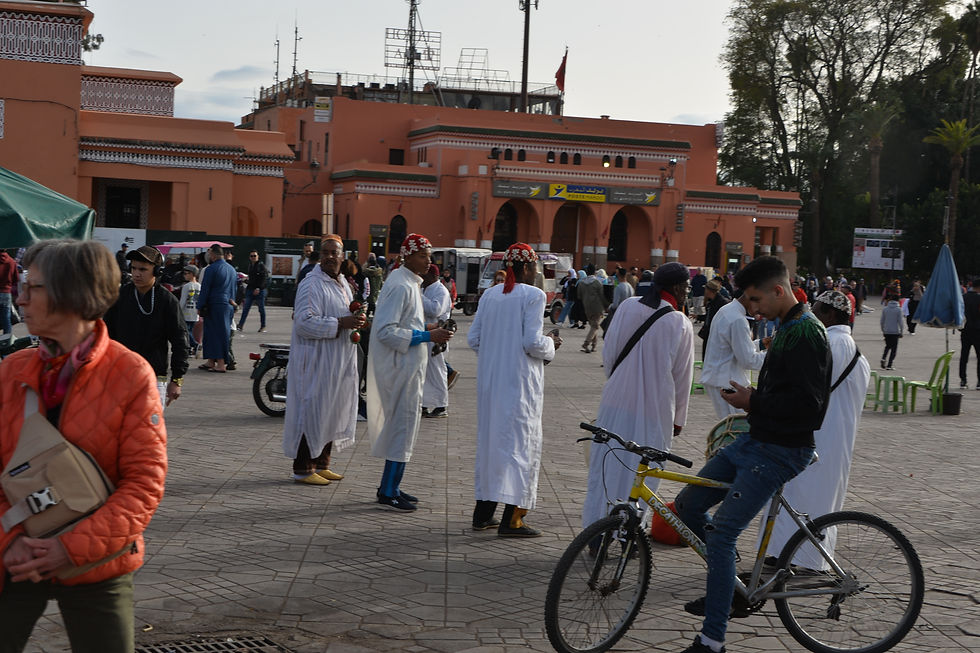
The triangular square is really alive with people in all colors possible, locals and tourists, performers of all kinds with animals, like snakes and monkeys, you may take a tour in a horse carriage should you wish not to walk.
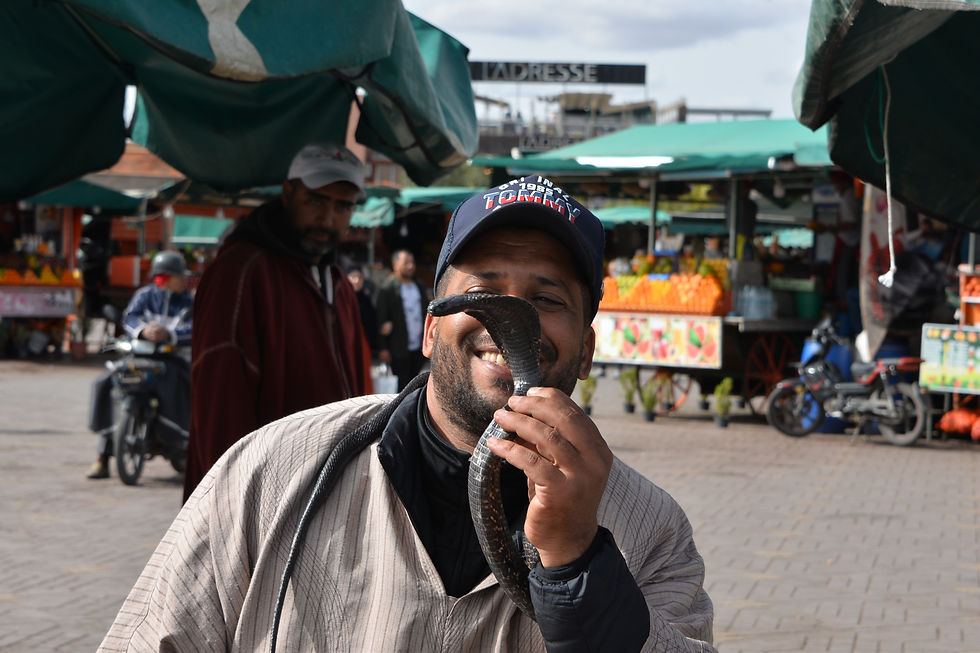
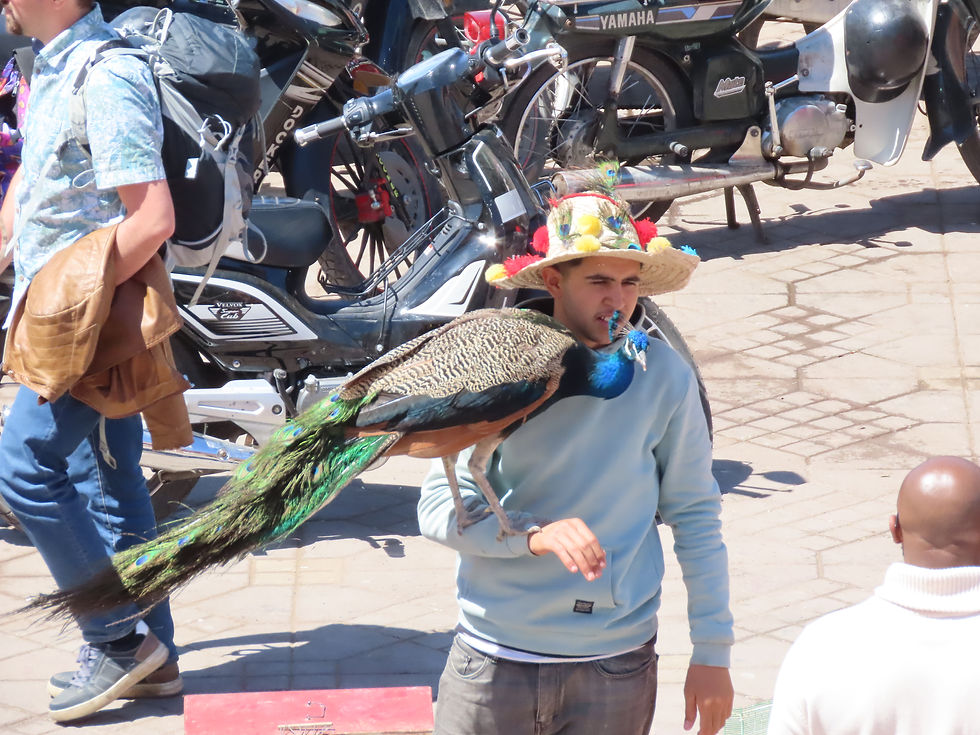

In the afternoon, like 4 o’clock, it is transformed with open stalls with food in a cacophony of smells and steam from cooking.


We preferred a restaurant with a terrace overlooking the square to enjoy a traditional tajine and watch people walking by below.
Historically the square has always been the center of things in Marrakech including public beheadings in the 19th century.


Koutoubia Mosque
The mosque was built in 1147 to celebrate the victory of the Almohad and sultan Yacoub al-Mansour over the Almoravid; the minaret is 77 meters high and the French decided that no building in Marrakech can be taller than the mosque. It was built as the biggest and most magnificent mosque in Morocco. The minaret is square, not round and has served as the model for all mosques in Morrocco. Inside the minaret the stairway is wide enough to ride a horse up instead of walking; as non-Muslims we could not enter and see if it is true.
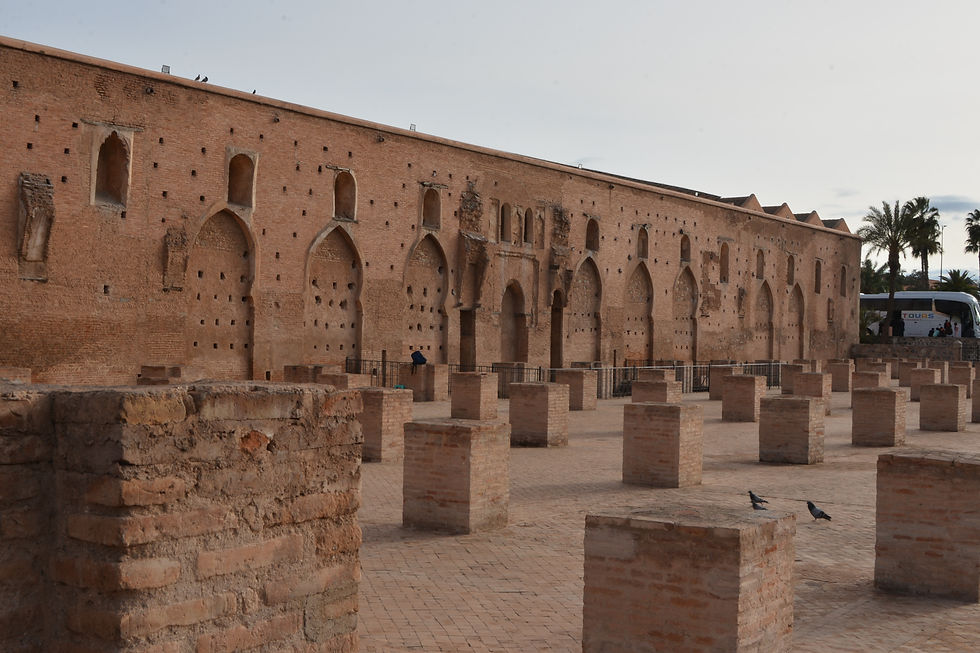
The wall of the original mosque that was in the wrong direction
The first architect miscalculated the direction of Mecca so they had to tear it down and rebuild by another architect, Ahmad ben Basso; he also built a copy in Serville, Spain, that later was Christianized as a cathedral, Giralda.
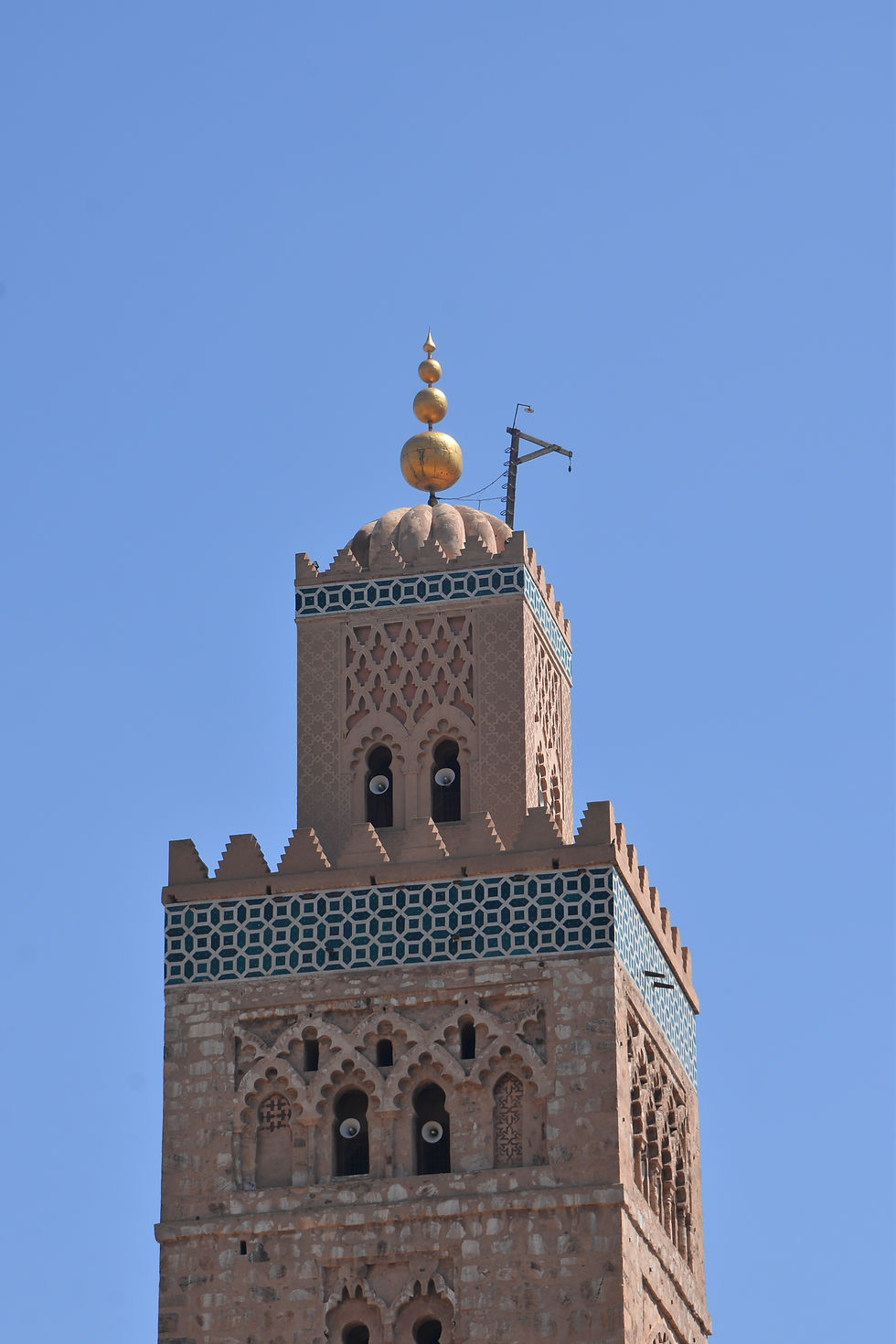
The local guide told us that the four gold balls on the top represent the three monotheistic religions: Islam (large ball) Christianity (middle ball) Jewish (small ball). The smallest ball on top is the one God. In the book-guide another explanation said that it represents the three main mosques in the world: the one in Mecca, Medina and Jerusalem and the smallest ball is because the wife of sultan Ya’qub al-Mansour ate during the Ramadan fasting, so her punishment was that her gold jewelry was melted into the small ball or all four balls. Another explanation is that the three balls represent water – fire – air. The mosque can hold up to 20,000 people for prayer.
Originally it had a coat of ochre plaster the same color as the walls around the Medina but during restoration in the 2000 it was decided to remove it and leave it a it is now.
The name Koutoubia Mosque means the mosque of the book sellers or librarians; when we were there, they were no book sellers, only a sugar cane seller.
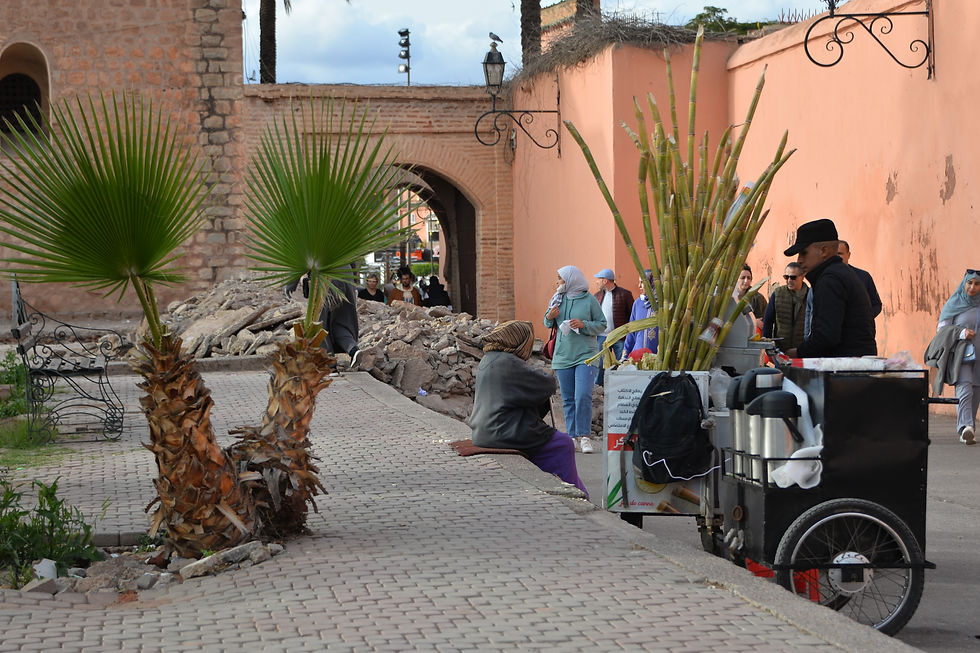
Selling sugar canes, not books
But on second thought, the printing press was only invented in 1439 in Europe, so my question here is, what books did they sell? it must have been handwritten manuscripts.

There is a white building next to the mosque, Fatima’s Tomb, she was the wife of an Iman, who was a liberated slave. The legend has it that she was woman during the day and a dove by night. It is a place of worship in particular for women have fertility problems. No access for non-Muslims.

Palais Bahia.
The palace of the beloved or the beautiful, built by the vizier Si Moussa Ba Ahmed for his favorite concubine, Bahia. Built in two parts 1859 by the father Si Moussa and in 1873 by the son, Ba Ahmed who had 4 wives and 24 concubines; he was too fat and unfit to walk upstairs, so there is no upstairs.

The best of the best materials was used by the best artisans at the time. Extravagance of no earthly use.
On the death of BA Ahmed in 1900 the palace was ransacked and looted and all valuables taken.
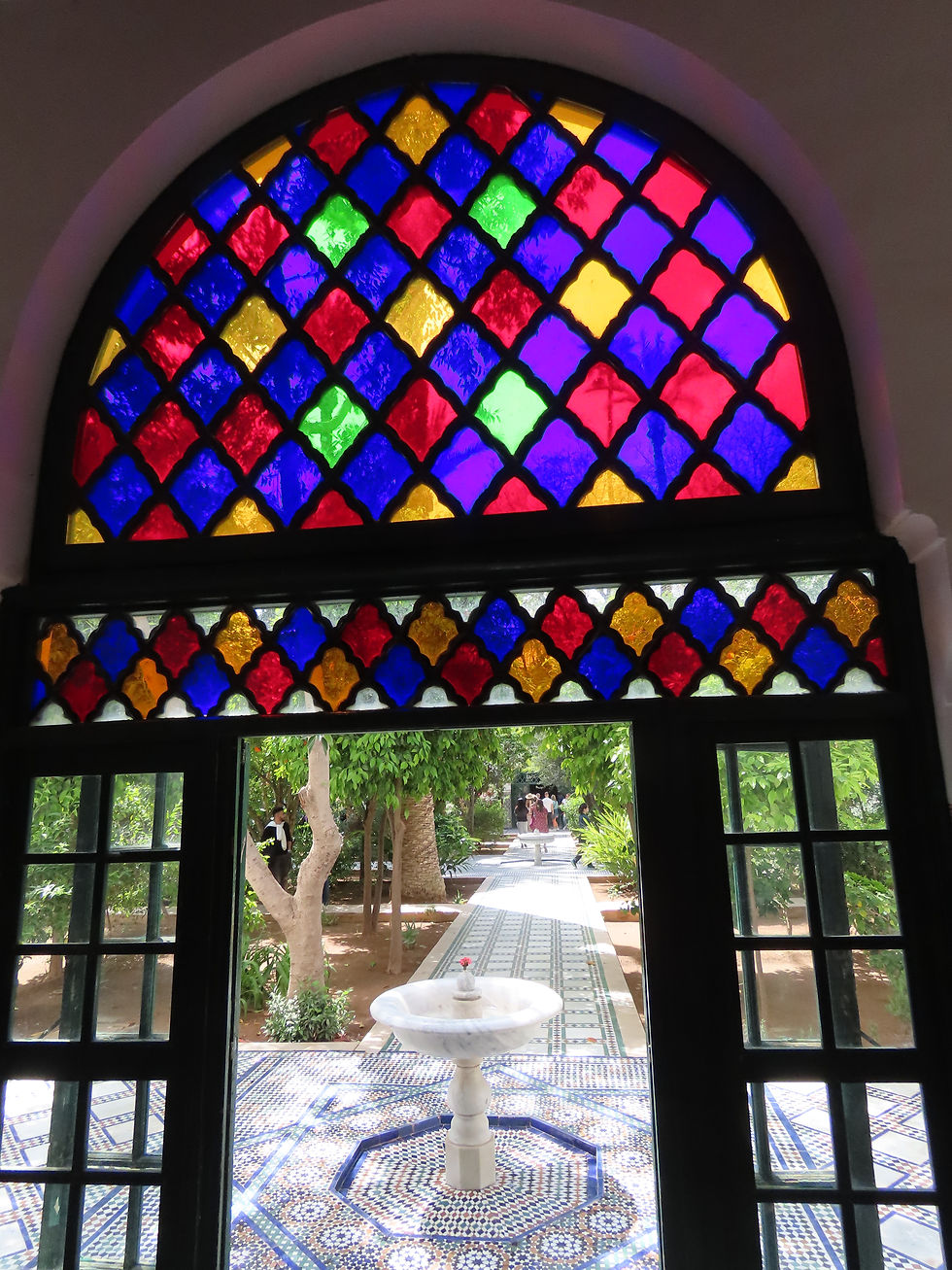
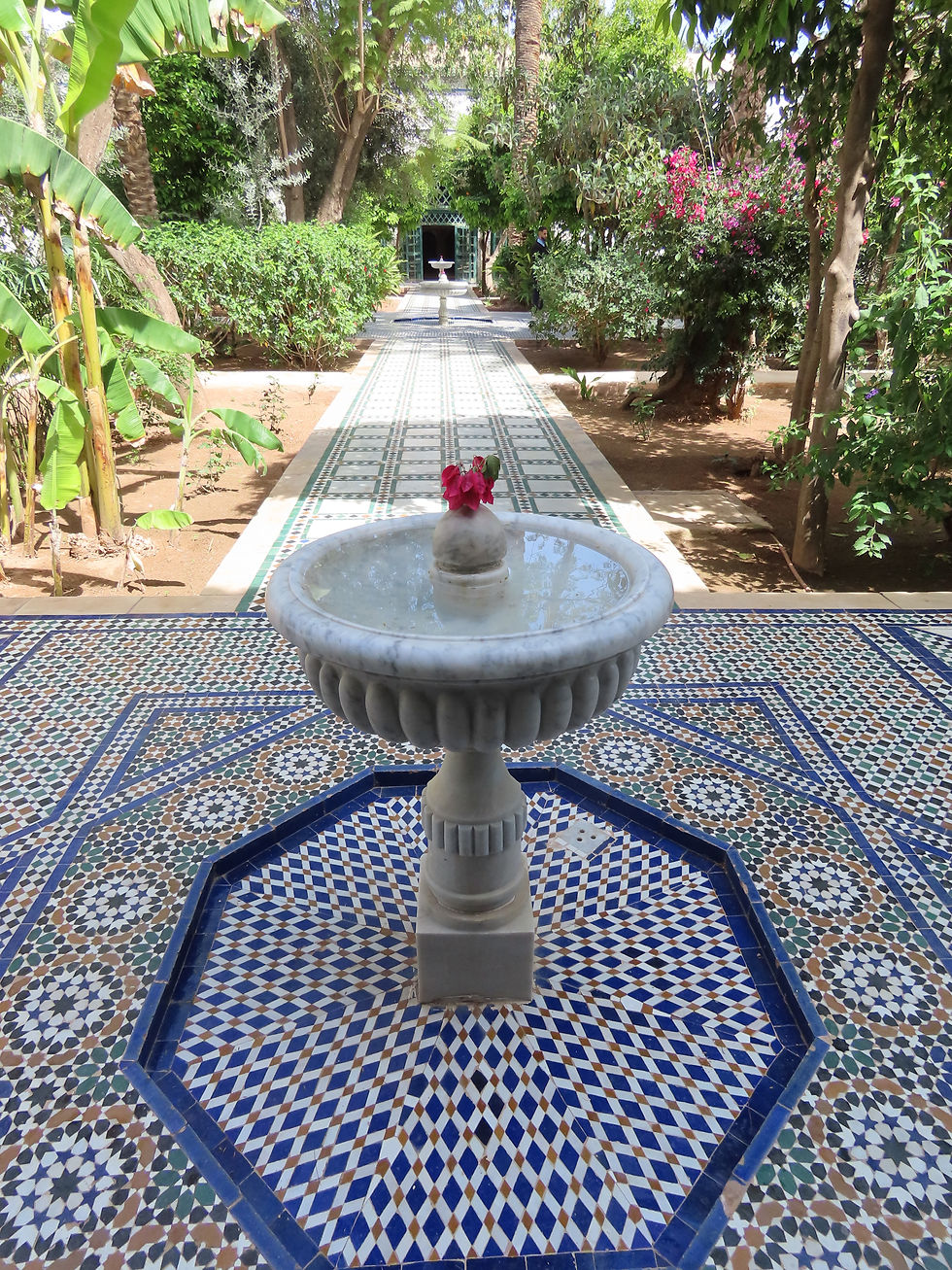

Today it belongs to the king and is a tourist attraction; it was difficult to photograph without somebody jumping into the photo.

The Mellah and the Jewish quarter.
Mellah means salt, because the quarter was built on salt marshes. Jews have lived in Morocco since the Roman times and destruction of Jerusalem in year 70 AD; probably even before that. After the expulsion of Jews from Spain in 1492 the numbers grew. The sultan in 1555 allowed Jews to settle in Marrakech in the Mellah.

The synagogue

The court yard of the synagogue
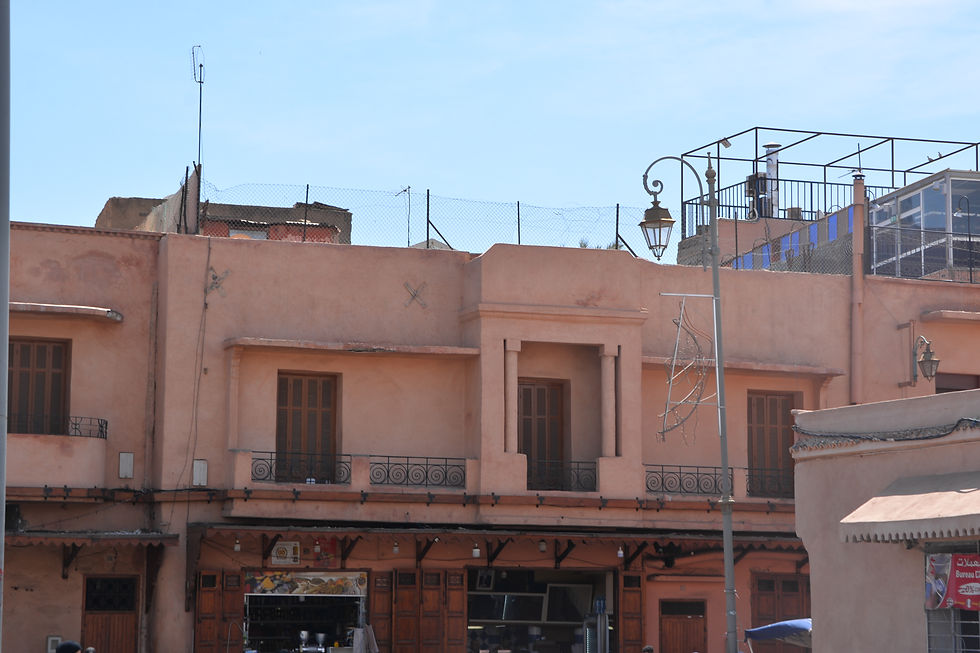
The houses of Jewish families have the balcony to the street to watch out for persecutors, while the Muslim families had the balcony to the yard for shade and cooling. An estimated 25,000 Jews were living in Marrakech in 1948 at the end of the French Protectorate; many emigrated to Israel. About 200 are left. We saw the El-Azama Synagogue.

Majorelle Gardens:
The French paint Jacques Majorelle created the garden since 1923 and cultivated it for over 40 years; when it was left to deteriorate until Yves Saint Laurent and Pierre Berge bought the place and restored it to what we see today.
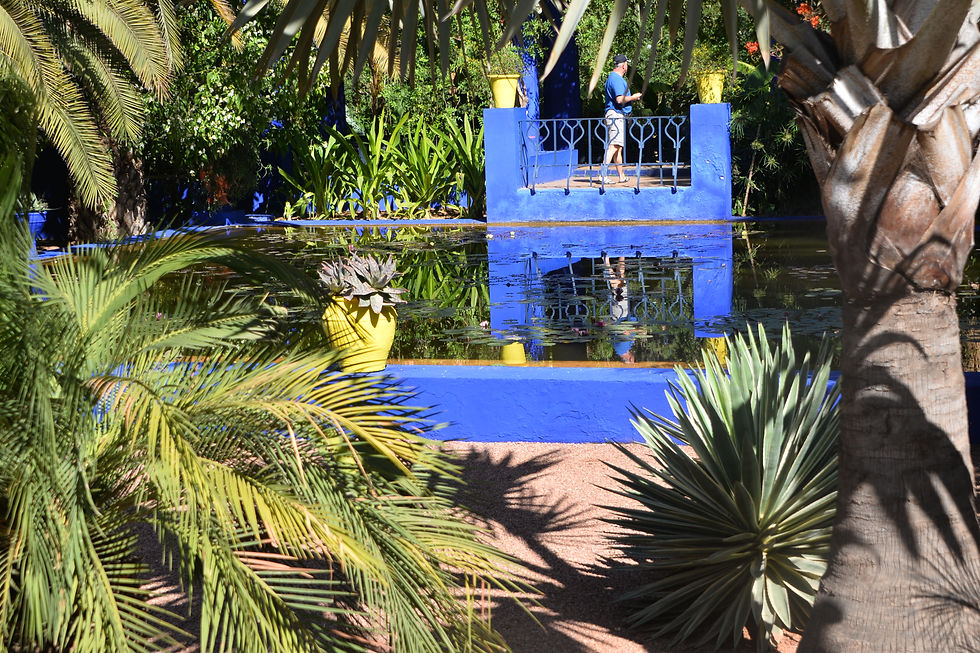
A beautiful botanic garden of green, you walk in the shadows of the trees and the bushes in between you see the beautiful blue with some contrast of yellow.

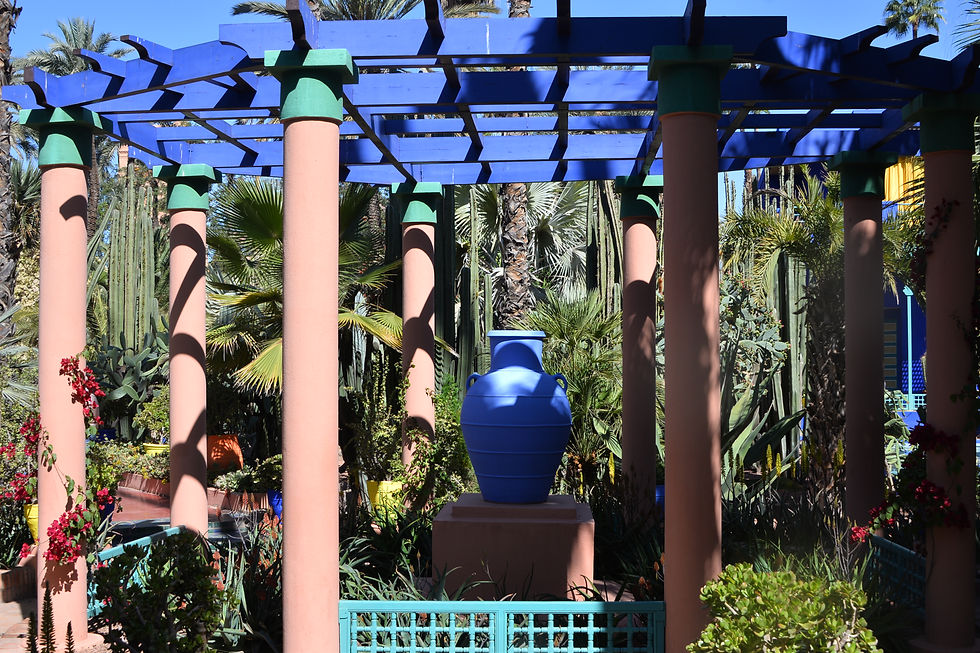
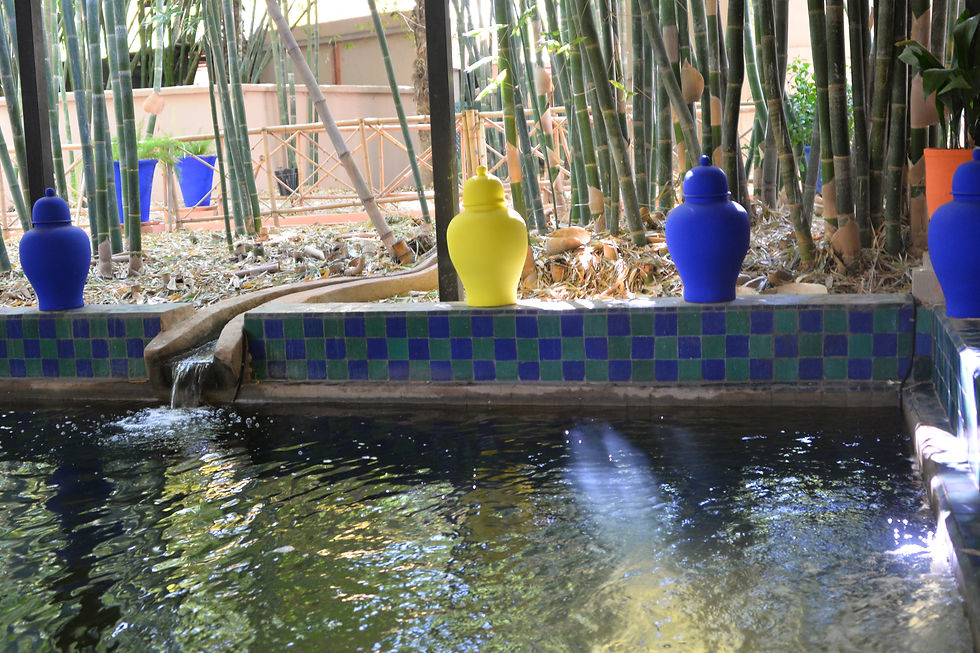

Many tourists, speaking any language you can think of.
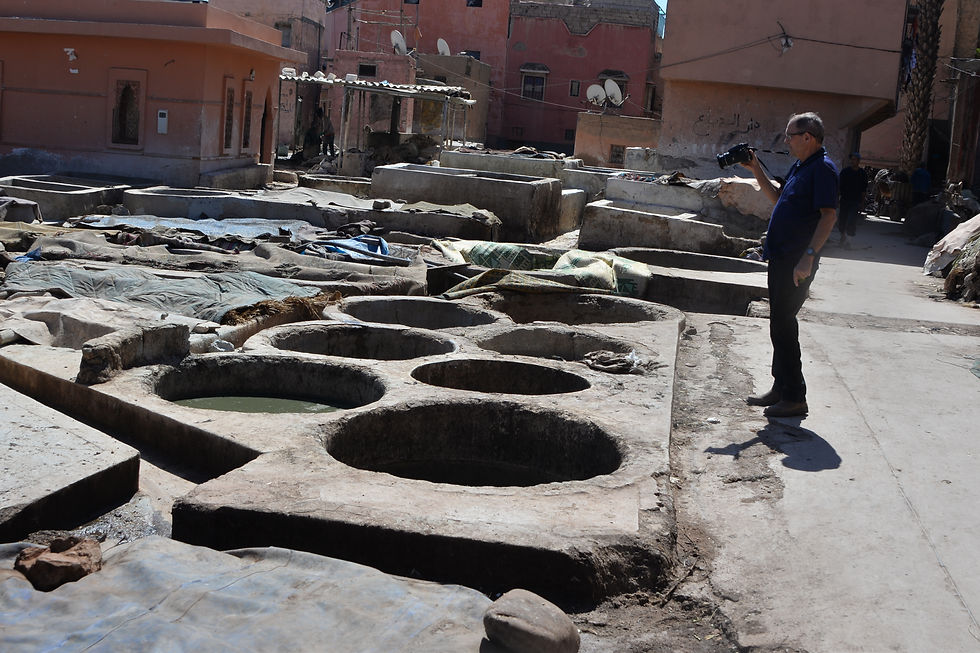
The tanneries
Our guide gave us mint to override the awful smell of the tanneries. What we saw here has been around for a thousand years using the same old technics by the same families as then. At the end of the tour, they expected us to buy something to support the family co-operative. We did, but because we felt uncomfortable not buying, not because we needed it.
The Souk.
We walked through the souk,


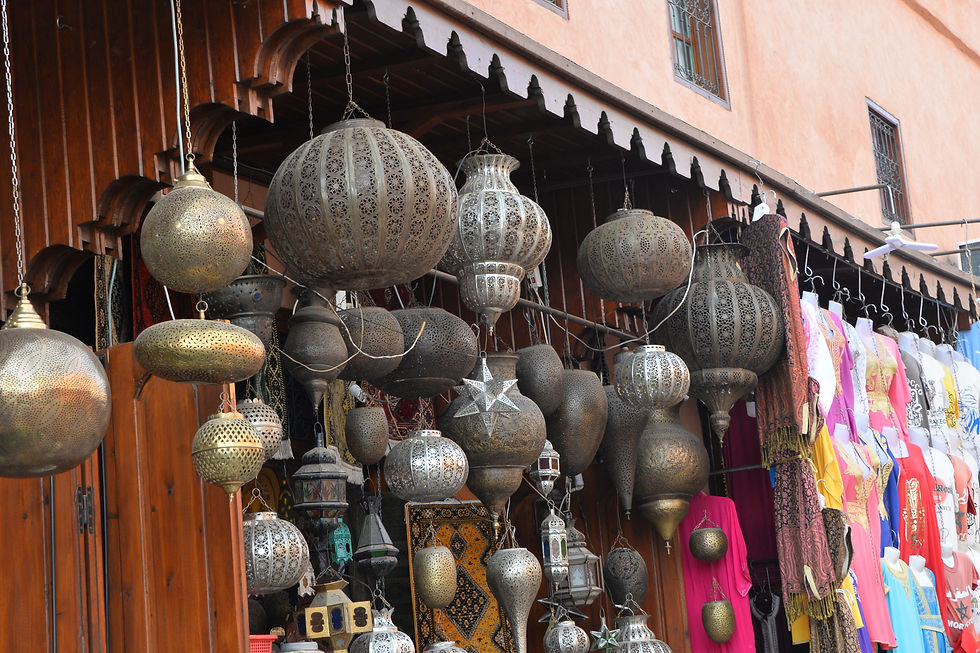
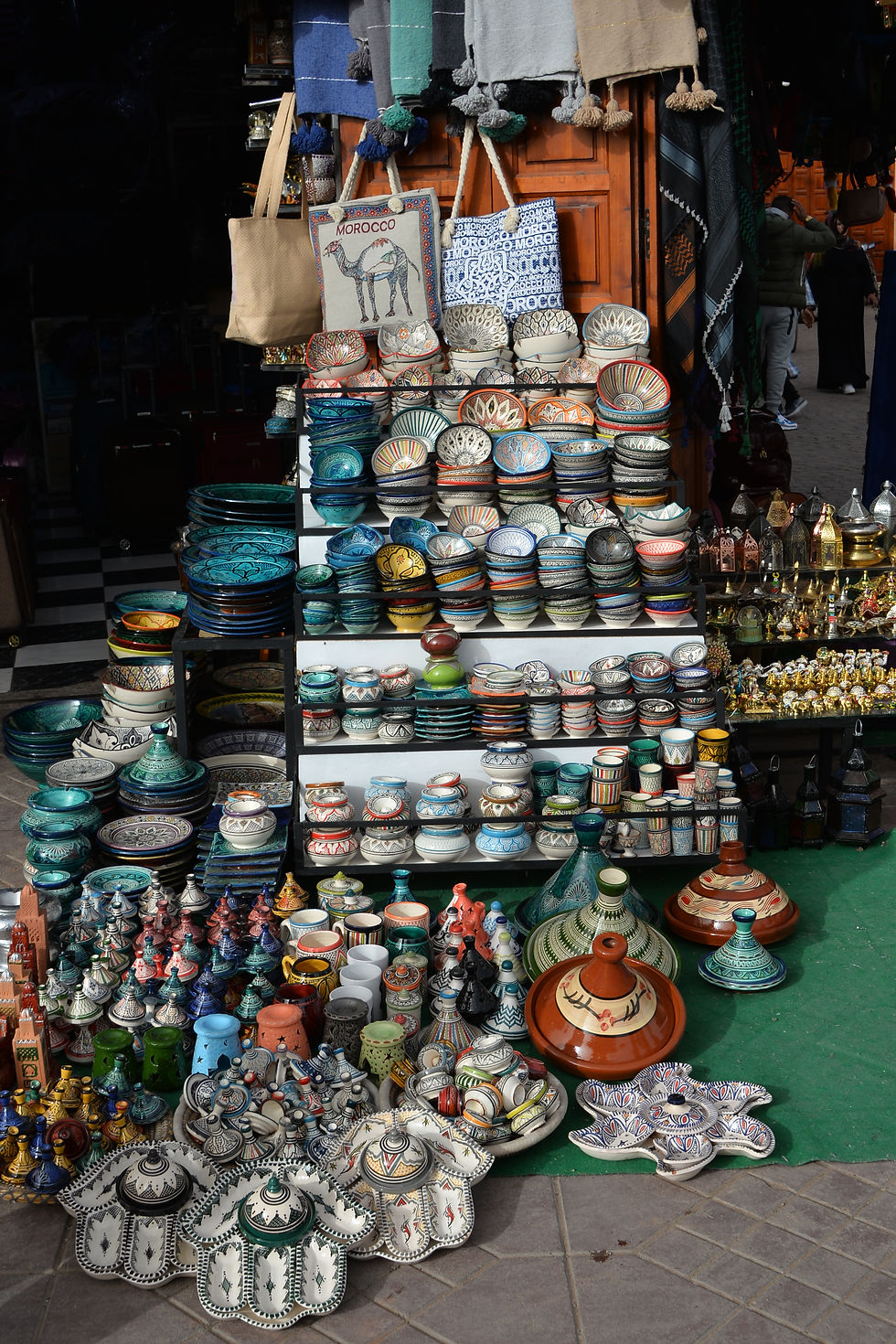
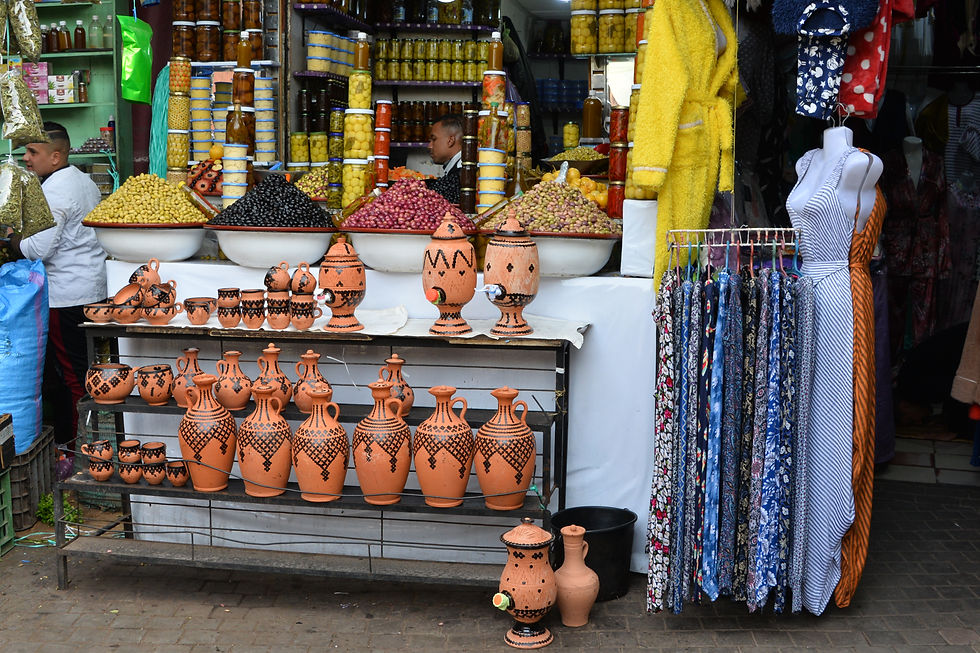
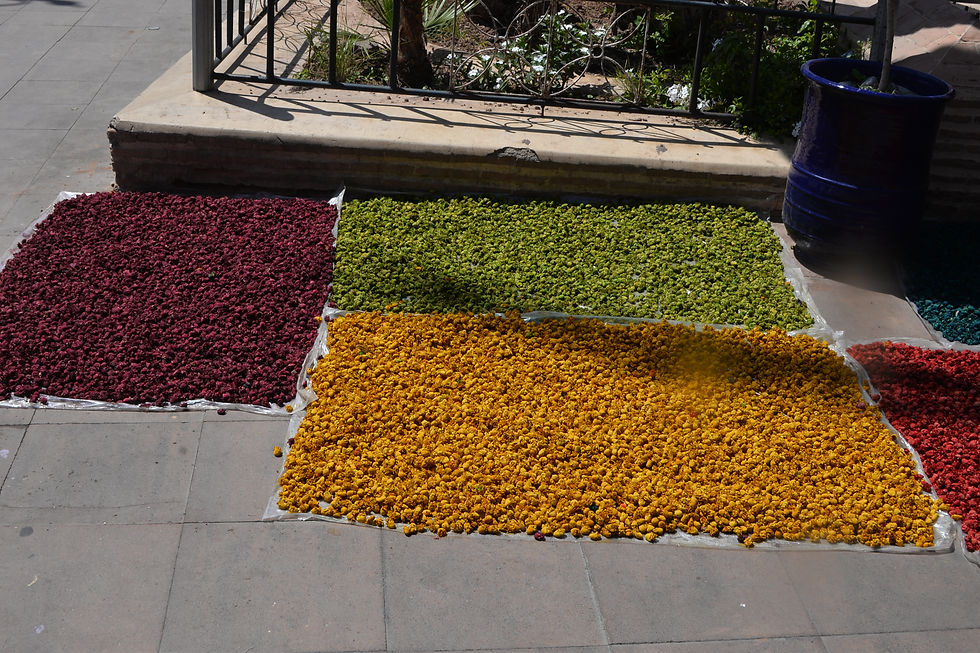

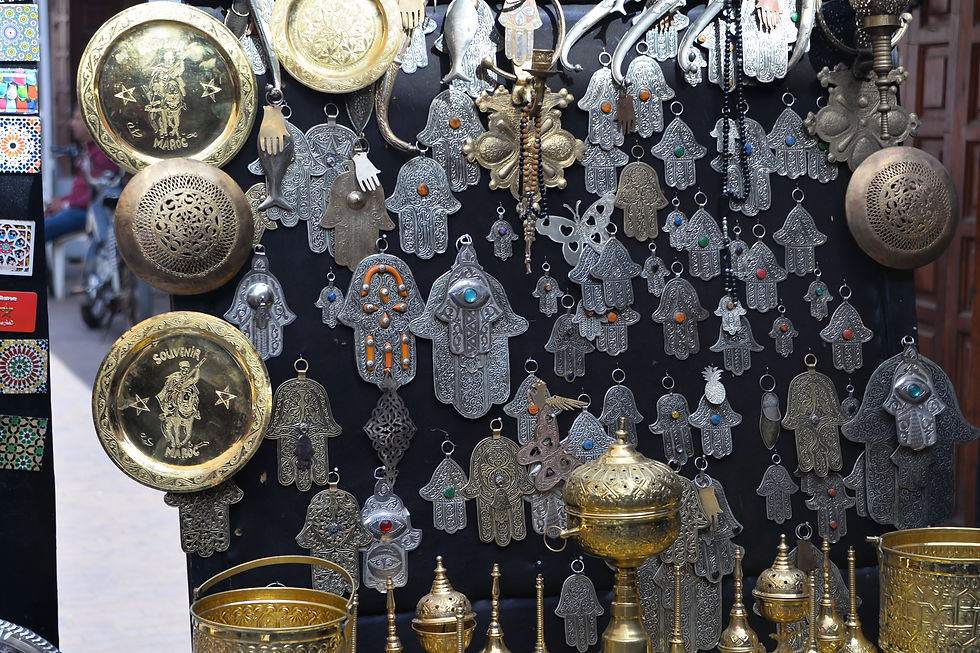


We wanted to see the Medersa Ben Youssef, a koranic school since the 14th century; but it was closed for restoration; I understand that has been undergoing for many years already.

The Menara Gardens:
They were established 1157 as the royal gardens. In quite many places in Morrocco Menara appears in names, it means light house in Arabic. Originally there were two pools, only one is left. The pool that has disappeared was called the cows pool, while what we see today was where the soldiers washed. The water is brought down from the mountains that on a clear day is seen in the back ground. The Saadian Garden Pavilion was built in the 16th century; as a romantic retreat for the ruler, who would throw the night’s concubine into the pool in the mornings after.

There is a large olive grove with four hundred years old olive trees imported from Italy for agricultural purposes. Our guide was very enthusiastic about the place. If you are short on time, I would skip the place.
In end this - It reported in the tour guide that one of the local specialties at Jemaa el-Fnaa is professional story telling (halakat) of old folk- tales, but as a tourist I do not speak the local Moroccan Darija, so I cannot understand. I have not been able to find on the internet such tales.
Marrakech is absolutely worth a visit, there is a lot to see, we did not see it all.
Comments